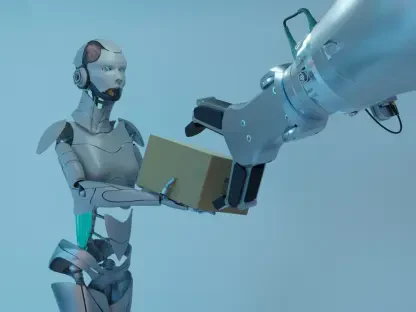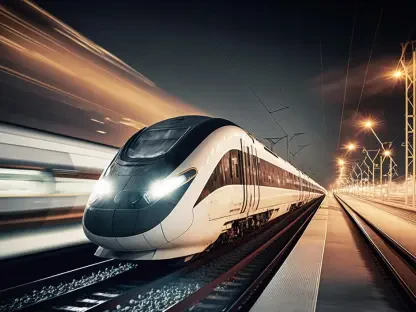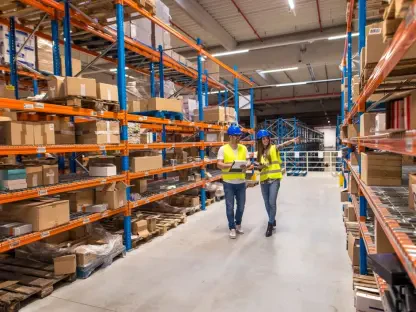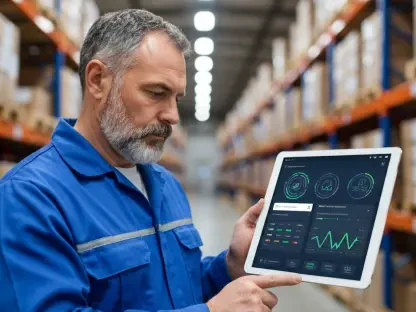Overview of the Transportation Industry in the Age of AI
The transportation sector stands as a cornerstone of global commerce, moving goods and people across vast distances while contributing trillions to the world economy. This industry, encompassing trucking, logistics, shipping, and public transit, employs millions worldwide and serves as the backbone of supply chains that keep markets interconnected. Major players like FedEx, UPS, and Maersk dominate key segments, yet the landscape is rapidly evolving with the integration of cutting-edge technologies, particularly artificial intelligence, which promises to redefine efficiency and scalability.
Beyond corporate giants, the sector’s workforce reflects a broad spectrum of roles, from long-haul truck drivers to inventory clerks and transit operators. These positions vary widely in skill requirements, ranging from manual labor to complex decision-making, creating a diverse employment base. As AI tools penetrate deeper into operations, their influence raises critical questions about the future of these jobs and the industry’s ability to adapt to technological disruption.
The rise of automation and data-driven solutions signals a transformative era for transportation, with companies racing to adopt innovations to stay competitive. This shift is driven by consumer demand for faster, more reliable services, pushing firms to leverage AI for everything from route planning to cargo handling. Understanding this dynamic sets the stage for exploring how such advancements might reshape the roles of countless workers in this vital field.
AI’s Growing Influence on Transportation Roles
Key Technological Trends Driving Change
Artificial intelligence is revolutionizing the transportation industry through groundbreaking innovations like autonomous vehicles, which are already being tested for long-haul trucking. These self-driving systems aim to reduce human error and lower operational costs, fundamentally altering how goods move across regions. Alongside this, route optimization tools such as Waze and Google Maps harness AI to provide real-time traffic data, slashing delivery times and fuel expenses for logistics firms.
Moreover, AI is streamlining supply chains by automating cargo inspection and predictive maintenance, ensuring smoother operations with less downtime. Such advancements not only boost efficiency but also offer significant cost-saving potential, allowing companies to redirect resources toward growth and innovation. The push for tech-driven solutions is evident as businesses strive to meet heightened expectations for speed and transparency in service delivery.
Consumer demand for instant gratification, fueled by e-commerce giants, adds pressure on the sector to integrate AI at an accelerated pace. This competitive environment compels even smaller players to explore automation, despite resource constraints, to avoid falling behind. As these technologies mature, their widespread adoption seems inevitable, reshaping the operational fabric of transportation in profound ways.
Quantifying AI Exposure in the Workforce
Recent studies reveal that approximately 1.1 million transportation workers in the United States face potential disruption due to AI as of the current year. This staggering figure underscores the scale of impact, with tasks valued at $65 billion out of $290 billion in annual wages deemed automatable. For high-exposure tasks, cost savings could range between $1 billion and $4 billion, highlighting the economic incentive for companies to embrace these technologies.
The data suggests a significant transformation over the next decade, with AI adoption likely to intensify as algorithms become more sophisticated. Roles involving repetitive, cognitive tasks are particularly vulnerable, setting a precedent for widespread job redefinition. Projections indicate that without intervention, the pace of automation could outstrip the industry’s capacity to retrain affected employees.
This shift carries broader economic implications, as automating high-value tasks may reduce labor demand in certain segments. While cost reductions benefit corporations, they also signal potential challenges for maintaining workforce stability. Tracking these trends provides critical insight into how the balance between technology and human labor will evolve in the coming years.
Challenges Posed by AI to Transportation Workers
The advent of AI introduces formidable challenges to transportation workers, with job displacement looming large for many. Research indicates that 83% of occupations in the sector have at least one task susceptible to automation, affecting a wide swath of the labor force. This pervasive risk threatens to upend livelihoods, particularly as companies prioritize efficiency over maintaining traditional roles.
Lower-skilled workers, such as clerks and dispatchers, bear the brunt of this disruption, with 28% occupying high-exposure positions. Often possessing minimal formal education, these employees face heightened vulnerability to wage declines and job loss, exacerbating socioeconomic disparities. The digital divide further compounds the issue, as larger firms adopt AI swiftly while smaller enterprises struggle to keep pace, creating uneven impacts across the industry.
Addressing these challenges requires strategic interventions like reskilling programs to equip workers for new roles. Without such measures, the gap between technological advancement and workforce readiness could widen, leading to broader societal consequences. Industry leaders must focus on bridging this divide, ensuring that automation does not come at the expense of equitable employment opportunities.
Regulatory and Ethical Considerations of AI in Transportation
Navigating the integration of AI in transportation demands a robust regulatory framework to ensure safety and accountability. Standards for autonomous vehicles, for instance, are under scrutiny to prevent accidents and protect public welfare, requiring strict compliance from manufacturers and operators. Additionally, data privacy laws play a critical role as AI tools collect vast amounts of information, necessitating safeguards against misuse.
Ethical concerns also surface with the potential displacement of workers due to automation of tasks like document review or navigation. Balancing technological progress with the human cost remains a pressing dilemma, prompting discussions on how to prioritize employee welfare alongside innovation. Governments and industry bodies are tasked with crafting policies that mitigate these risks while fostering an environment conducive to AI development.
The path forward hinges on collaborative efforts to shape regulations that support both advancement and protection. Training mandates or financial incentives for upskilling could serve as mechanisms to ease transitions for affected workers. Such measures aim to align the benefits of AI with a commitment to preserving the dignity and stability of the transportation workforce.
The Future of Transportation Jobs in an AI-Driven World
Looking ahead, the transportation industry appears poised for a hybrid model where human expertise collaborates with AI rather than being replaced by it. While full automation remains unlikely in the near term, the emphasis will shift toward roles that complement technology, such as overseeing systems or managing exceptions that algorithms cannot handle. This synergy offers a glimpse of a redefined workplace focused on efficiency and adaptability.
Emerging positions will likely demand tech proficiency, creating opportunities for workers to transition into AI oversight or customer interaction roles that leverage personal skills. This evolution underscores the importance of continuous learning to stay relevant in a landscape increasingly driven by digital tools. Preparing for these changes requires proactive investment in education and training to build a resilient labor force.
Several factors will influence this trajectory, including global economic conditions, rapid technological advancements, and shifting labor market demands. Flexibility in workforce strategies will be paramount to navigate uncertainties and capitalize on new possibilities. Embracing adaptability ensures the sector can harness AI’s potential while safeguarding the roles that remain uniquely human.
Conclusion and Recommendations for a Balanced Transition
Reflecting on the insights gathered, it is evident that AI poses both a significant challenge and an opportunity for the transportation sector, with 1.1 million workers at risk and $65 billion in tasks susceptible to automation. The vulnerability of cognitive, lower-skilled roles stands out as a critical concern that demands immediate attention. These findings highlight the urgency of addressing the potential displacement that accompanies technological progress.
Moving forward, a key step should involve substantial investments in training and upskilling initiatives to prepare workers for evolving demands. Industry stakeholders are encouraged to prioritize human-centered strategies, fostering partnerships between educational institutions and companies to facilitate seamless transitions. Such efforts aim to equip employees with skills to thrive alongside AI, turning disruption into a catalyst for growth.
Additionally, policymakers and business leaders need to explore innovative frameworks that balance innovation with worker protection, such as incentives for firms adopting inclusive automation practices. By focusing on equitable outcomes, the transportation sector could set a precedent for integrating technology in a way that strengthens its foundation. This approach promises sustained progress, ensuring that advancements enhance rather than diminish the human element at the heart of the industry.









